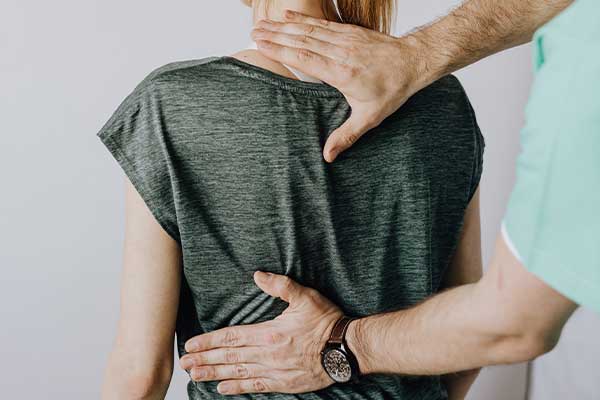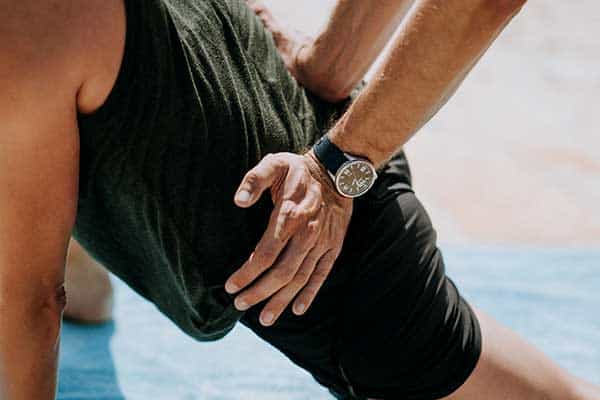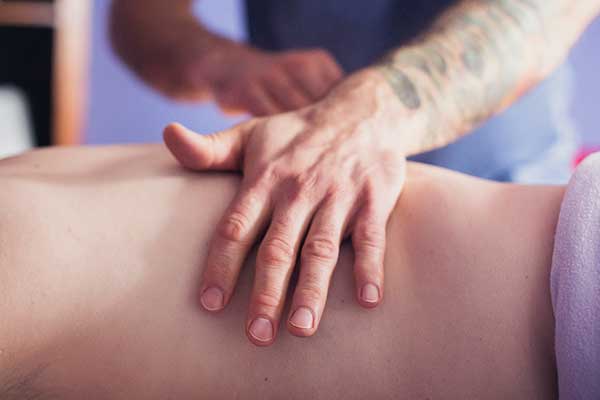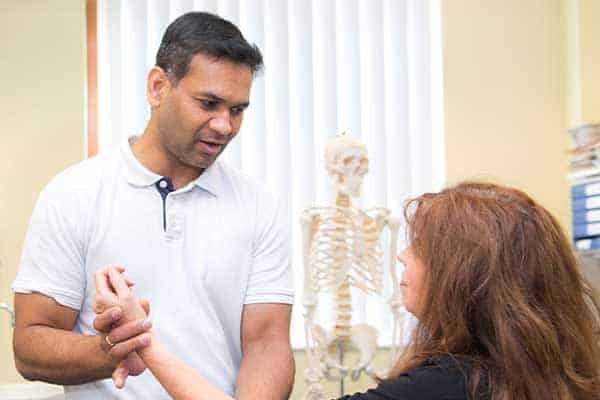Mechanical low back pain is a pain that cannot be attributed to an issue with one particular part of your spine and is related to movements of the lumbar and sacral regions of the spine. This is the most common form of back pain.
As many as 80% of people experience back pain at some point in their lives. In 90% of these cases, it is mechanical lower back pain.
What causes mechanical lower back pain?
Mechanical low back pain can be caused by excessive or prolonged posture issues such as too much sitting or standing. Pain can also be caused by overuse or muscle strain or simply by reduced muscular strength in the abdominal, pelvis and back region which in turn strains the spinal column. A new injury can cause various structures in the back to become painful. Certain activities can also aggravate older injuries. Often, however, there is no specific injury present and yet the pain is very real.
There could be a number of different factors causing mechanical lower back pain. These can range from the health of your tissues and joints to issues relating to age, level of activity/exercise, strength, body weight, genetics, diet, sleep and stress.
Even severe lower back pain does not generally indicate serious damage or medical problems.
What are the symptoms of mechanical lower back pain?
Mechanical lower back pain can be a dull ache or a sharp pain. It can come on gradually or happen due to sudden movements.
For most people:
- The pain is localised to your lower back region.
- You notice the pain when performing certain movements.
- The pain is not always at the same level and sometimes gets worse or better.
For some people:
- You may also feel referred pain in your buttocks/hips.
How is mechanical lower back pain diagnosed?
Your doctor might diagnose mechanical lower back pain after an assessment of your mobility and strength, if your symptoms do not point to a problem with a particular structure such as a joint, ligament or a disc.
What are the treatment options for mechanical lower back pain?
Mechanical lower back pain will usually go away by itself. However, you can help to make this happen.
The first thing to remember is that your spine is a strong, stable structure and you will not damage it by moving. Being afraid to move is a natural reaction to pain but it can make the problem worse or stop it from resolving itself.
Try to keep moving, but start carefully, avoiding painful activities. You could try some simple stretching and mobility exercises to gain confidence and gradually increase your range of movement. There is no one exercise that is good for mechanical lower back pain – it is up to you. Similarly, there are no exercises that are bad for mechanical lower back pain, if you pace yourself, and only exercise within your pain limits.
You could also apply gentle heat or ice, which can help to manage the pain. (Do not put ice directly next to skin as it may cause ice burn. Wrap it in a damp tea towel.)
Paracetamol-based painkillers can help by enabling you to continue with your normal activities. Anti-inflammatory painkillers such as Ibuprofen can also be helpful in reducing pain. Ask your doctor or pharmacist for advice.
What is the prognosis (outlook) for mechanical lower back pain?
Mechanical lower back pain tends to clear up within six weeks. If it does not, you are advised to visit your GP for further examination.
If your symptoms persist, your GP may recommend physiotherapy, which has been shown to be beneficial for most back pain or other manual therapies.
In a small minority of cases (1-2%), back pain can indicate a more serious condition. If you have any concerns, check the symptoms on our serious back pain page.
How can I prevent recurrence of mechanical lower back pain?
Keeping active can help to reduce the chance of further episodes of mechanical lower back pain. Continue your stretching and mobility exercises and add more stabilisation, strengthening and endurance exercises to ease the burden on your spine.
It is advisable to stand up and change your position regularly, whether you are resting or at work. While it is always a good idea to think about your posture and whether or not it is causing discomfort, generally it is sustaining a posture for too long that is bad for you.
You can improve the health of your lower back by addressing other lifestyle factors such as diet, sleep, smoking, stress and mental health issues.
Also, always pay attention to your lifting and carrying techniques. Keep objects close to your body. Use your knees and keep your back straight when lifting. Carry similar loads in each hand to avoid leaning and always try to move your feet to turn, rather than twisting your spine.
Recommended exercises (click to expand):
Seated flexion
Sit on an upright chair with your knees about as far apart as the width of your shoulders.
Put your hands together and slowly bend forward at the waist to slide your arms in between your knees, down towards the floor and beneath the chair.
You can control the pace of the forward bend by gently pressing your arms against your inner thighs.
Reach as far as you can beneath the chair with both arms, allowing your lower back to stretch. Breathe in and out normally during this stretch.
To bring yourself back up, put one hand on your foot for support and then place your other hand just above your knee.
Use the hand on your knee to push yourself gently back into a seated position.
Seated rotation
Sit straight in an upright chair.
Without moving your legs or hips, rotate your body round to one side.
You can use your arms on the back of the chair to pull yourself round further.
You should feel this stretch through your torso.
Repeat to the other side.
Prone extension
- Lie on your front with your forearms under your shoulders.
- Push your chest upwards with your forearms, raising your head to look forwards and extending the lower back.
- Keep your hips pressed into the floor and your legs straight.
- Hold this position and then relax.
Cat camel
- Kneel on all fours with your hands below your shoulders and your knees below your hips. Find a neutral position for your spine and head, looking down between your hands.
- Sink your back down towards the floor, lift your head up and push your tailbone out, making a downward-curved saddle shape with your spine like a cat stretching.
- Hold this position.
- Now arch your back up in the opposite direction by tucking your head and tailbone in and pulling your belly button in towards your spine, making a camel’s hump with your spine.
- Hold this position and then repeat.
Puppy dog
- Start on all fours, with your shoulders above your hands and your hips above your knees.
- Carefully walk your hands forward and lower your chest towards the floor. Keep your hips lifted.
- As you extend your arms, allow your head and chest to drop down to the floor.
- If it is uncomfortable to lower your head and chest all the way to the floor, you could place a block or rolled up towel underneath your forehead to lessen the stretch.
- Let your shoulders slide back towards your hips, not hunch up towards your ears.

How to get referred
Find out how to get referred to Practice Plus Group MSK & Diagnostics for NHS treatment.




